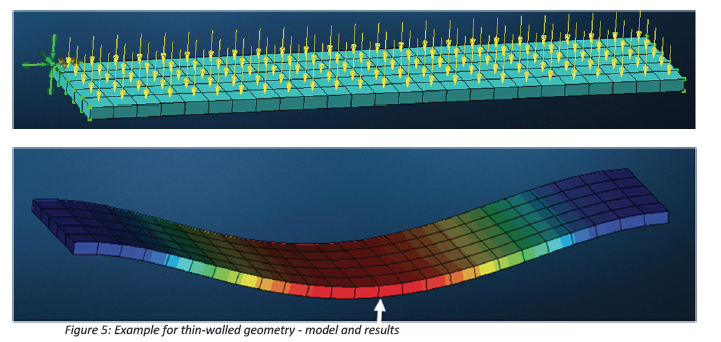
The finite element method (FEM) is increasingly used for structural calculations. For the most part, FEM is used to calculate structural deformation, stress, fatigue life, vibration, or temperature. The manufacturing of a product may be simulated, and one can calculate the acoustics, crash behaviour, and many other disciplines. The FEM model answers questions such as will the product satisfy the design requirements?, will the component fail? or, later, why did it fail?
FEM is suitable for structures that go beyond a simple analytical formula representable geometry. The geometry is meshed, that is, divided into many small parts. These parts are called finite elements. The FEM solver processes these elements typically using matrix methods to produce the required results (deformation, stress and so on).
Not only FEM professionals, but also designers and developers can quickly deliver results with FEM. But some background knowledge is necessary, in order to produce reliable results. The old adage ‘garbage in garbage out’ applies to FE models…










Water Sector Talent Exodus Could Cripple The Sector
Maybe if things are essential for the running of a country and we want to pay a fair price we should be running these utilities on a not for profit...